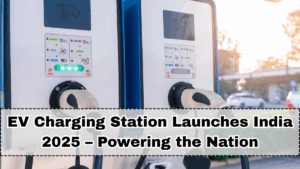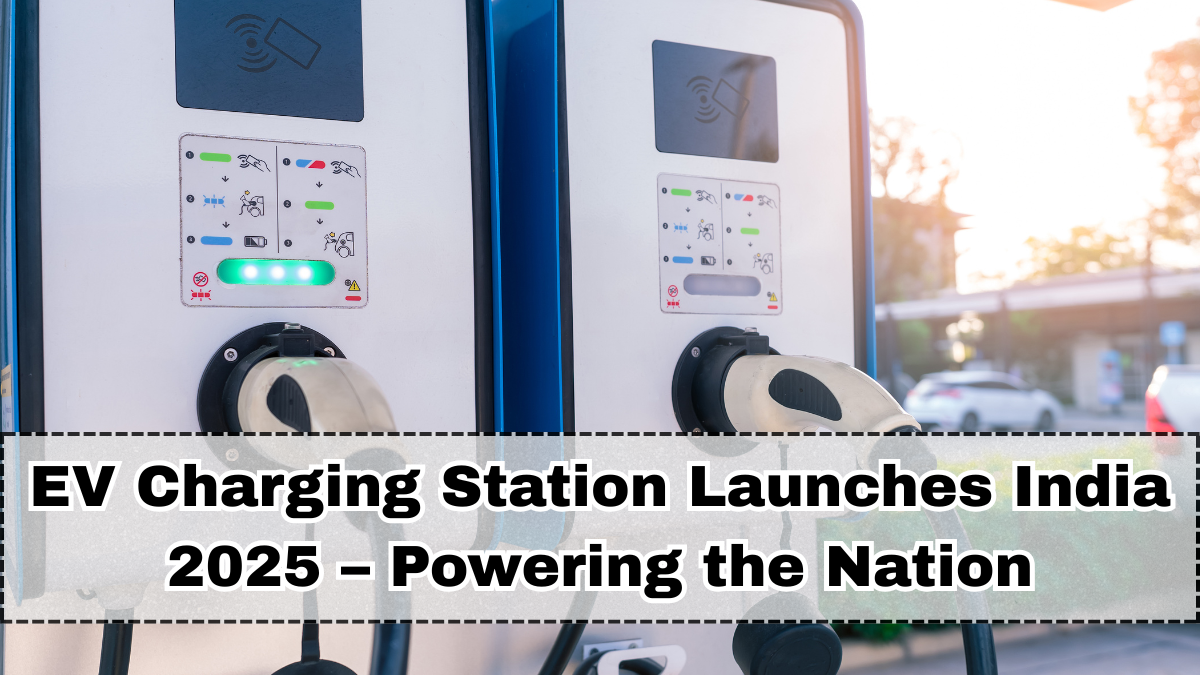India’s shift toward electric mobility is accelerating, and Upcoming EV Charging Station Launches India 2025 will play a crucial role in building a nationwide network that supports clean, reliable, and long-distance EV travel. As electric vehicles become more accessible across segments, charging availability is becoming the number one priority for consumers and fleet operators. In 2025, India will witness a major rollout of fast chargers, highway superchargers, urban charging hubs, and integrated renewable-powered charging stations.
With the growth of EV adoption, the demand for high-speed charging infrastructure is increasing rapidly. The government, oil companies, power utilities, and EV manufacturers are collaborating to expand India’s charging network. The EV infrastructure India 2025 roadmap includes ultra-fast chargers, interoperable charging protocols, mobile charging units, and enhanced digital payment systems that make charging seamless for every EV user.

Major EV Charging Station Launches Across India in 2025
1. Tata Power – 5,000 New Charging Points
Tata Power will expand its network with thousands of new chargers across cities, highways, malls, and workplaces.
Key Highlights:
• Both AC and DC fast chargers
• QR-based payments
• Solar-powered hubs
USP: India’s largest and most reliable EV charging network
2. ChargeZone HyperFast Stations – 400 kW Superchargers
ChargeZone will introduce HyperFast charging stations capable of adding 150–200 km range in minutes.
Key Highlights:
• Located on major highways
• CCS2-based high-speed charging
• Smart route assistance
USP: Best long-distance EV charging experience
3. Jio-BP Pulse Urban Grid – Dense City Chargers
Jio-BP will roll out compact fast chargers in urban zones, solving city EV users’ parking and charging challenges.
Key Highlights:
• 30–60 kW city fast chargers
• Mobile app for navigation
• 24/7 surveillance
USP: Best everyday charging convenience
4. Indian Oil & Hyundai Supercharging Corridors
A joint project will launch ultra-fast charging corridors across key national highways.
Key Highlights:
• 150 kW+ charging stations
• Amenities for long-distance drivers
• Highway-side solar integration
USP: Smooth intercity EV travel
5. Statiq & OEM Collaboration Stations
Statiq will partner with automakers to add new interoperable charging stations in tech parks and commercial hubs.
Key Highlights:
• One-tap app-based charging
• Real-time availability
• Central monitoring
USP: Best office-zone charging coverage
Why India Needs Massive Charging Expansion
With EV sales growing at over 100% annually, the availability of fast, reliable charging is essential to support millions of new EV users.
Benefits of strong charging infrastructure:
• Encourages EV adoption
• Reduces range anxiety
• Supports long-distance travel
• Boosts commercial EV fleets
• Reduces pollution from transportation
The rollout of fast charger India 2025 networks will also help integrate renewable energy into charging hubs, reducing operational costs and carbon emissions.
Technology Advancements in 2025 Charging Systems
New charging stations launching in 2025 will include advanced digital, hardware, and efficiency upgrades.
Key tech features include:
• 150–400 kW ultra-fast chargers
• Dynamic load balancing
• Solar-roof integrated stations
• Real-time diagnostics
• NFC and UPI autopay
• Battery health analytics
These systems make charging faster, smarter, and more accessible for all EV categories.
Types of Charging Stations Expanding in 2025
India will see multiple types of chargers to suit different mobility needs.
Categories include:
• AC slow chargers (3.3–7 kW): For home and office use
• DC fast chargers (30–60 kW): For city and corporate fleets
• DC superfast chargers (150–400 kW): For highways
• Portable mobile chargers: For emergency assistance
• Solar-powered EV hubs: For sustainable, low-cost charging
This multi-layered charging ecosystem ensures that EV users always find a charge point wherever they go.
Charging Infrastructure for Commercial Fleets
Fleet operators like e-commerce delivery companies, taxi aggregators, and logistics providers will rely heavily on EV charging hubs in 2025.
Advantages for fleets include:
• Lower energy costs
• Predictable charging schedules
• Dedicated charging lanes
• Better uptime with fast chargers
Commercial adoption will significantly accelerate India’s EV revolution.
Why 2025 Is a Turning Point
Government incentives, private investment, and rising EV demand will make 2025 a landmark year for India’s charging ecosystem. With thousands of new stations launching, EVs will become easier to own, cheaper to run, and far more practical for both urban and rural users.
By the end of 2025, India is expected to have one of the largest EV charging networks in Asia, supporting millions of electric scooters, cars, vans, and buses.
FAQs
How fast are 2025 charging stations?
Superchargers can add 150–200 km in under 20 minutes.
Are charging stations reliable in rural areas?
Rural expansion is growing, with solar hubs improving availability.
Which connector types are common in India?
CCS2 for cars, CHAdeMO in select stations, and Type 2 AC chargers.
Will home charging remain important?
Yes, most EV owners will still charge at home for convenience.
Do charging stations offer digital payment?
Yes, UPI, NFC, and app-based payments are widely supported.
Click here to know more.
